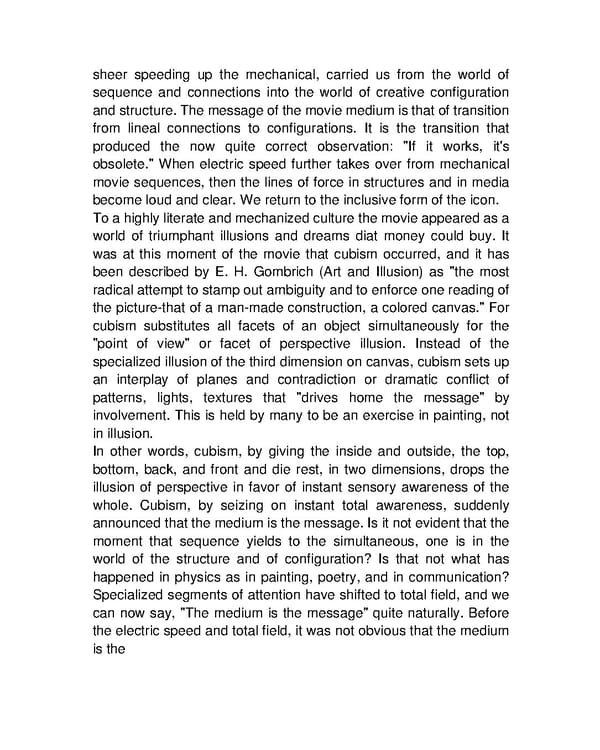sheer speeding up the mechanical, carried us from the world of sequence and connections into the world of creative configuration and structure. The message of the movie medium is that of transition from lineal connections to configurations. It is the transition that produced the now quite correct observation: "If it works, it's obsolete." When electric speed further takes over from mechanical movie sequences, then the lines of force in structures and in media become loud and clear. We return to the inclusive form of the icon. To a highly literate and mechanized culture the movie appeared as a world of triumphant illusions and dreams diat money could buy. It was at this moment of the movie that cubism occurred, and it has been described by E. H. Gombrich (Art and Illusion) as "the most radical attempt to stamp out ambiguity and to enforce one reading of the picture-that of a man-made construction, a colored canvas." For cubism substitutes all facets of an object simultaneously for the "point of view" or facet of perspective illusion. Instead of the specialized illusion of the third dimension on canvas, cubism sets up an interplay of planes and contradiction or dramatic conflict of patterns, lights, textures that "drives home the message" by involvement. This is held by many to be an exercise in painting, not in illusion. In other words, cubism, by giving the inside and outside, the top, bottom, back, and front and die rest, in two dimensions, drops the illusion of perspective in favor of instant sensory awareness of the whole. Cubism, by seizing on instant total awareness, suddenly announced that the medium is the message. Is it not evident that the moment that sequence yields to the simultaneous, one is in the world of the structure and of configuration? Is that not what has happened in physics as in painting, poetry, and in communication? Specialized segments of attention have shifted to total field, and we can now say, "The medium is the message" quite naturally. Before the electric speed and total field, it was not obvious that the medium is the
 Understanding Media by Marshall McLuhan Page 22 Page 24
Understanding Media by Marshall McLuhan Page 22 Page 24